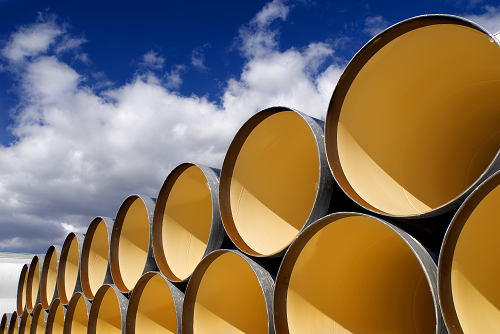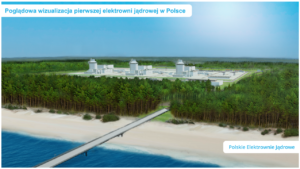PGNiG admitted that the target share of the company’s own gas output in its booked capacity for the Baltic Pipe will be achieved later than previously expected. This may be caused by the difficult economic situation in the sector. The missing amount is to be delivered thanks to new gas contracts, which reportedly there will be a few – writes Wojciech Jakóbik, editor in chief at BiznesAlert.pl.
Less own gas production, and more gas contracts instead?
On the 21st of September, PGNiG CEO announced the company’s new acquisitions on the Norwegian Continental Shelf. The state giant bought shares in the Kvitebjørn and Valemon fields, operated by Norway’s Equinor and owned by Norske Shell. The purchase will increase PGNiG’s production in Norway from the current 0.7 to 0.9 bcm of gas a year in 2021. PGNiG explained to BiznesAlert.pl why the company wanted to add its own gas to the capacity of the planned Baltic Pipe gas pipeline. The state of the existing deposits indicates that PGNiG can expect to extract 2.2 bcm between 2026 and 2027. The previous board declared it wanted to produce 2.5 bcm a year in 2022, but already during its term that deadline had to be revised and updated to after 2022. The company refused to reveal to us its output estimates for 2022, when the new gas pipeline between Poland and Norway is to be ready. Future purchases may increase the share of own gas, which is desirable for economic reasons, as gas from own production is cheaper.
The remaining amount of the blue fuel will be delivered by external suppliers, mostly Equinor and Shell. PGNiG is silent about the negotiations on this topic, which is why it may turn out that we will learn about their results right before October 2022, when Baltic Pipe will be launched. This is caused by the market character of the gas trade on the Norwegian Continental Shelf, and by the probable form of cooperation. Poles should sign a number of various, medium-term gas agreements. There is very little chance that one, large, long-term contract will be signed that would be akin to the Yamal deal with Gazprom, a contract that will not be extended. Having relations with various suppliers (Equinor, Shell, etc.) improves Poland’s negotiation position, while shorter contracts will make it possible to adjust the Baltic Pipe supply portfolio to the fluctuating market situation. Today, that situation is not conducive to increasing output.
We won’t run low on gas, there is too much of it
The oversupply of LNG, the economic slowdown in Europe and warm winter are causing record-low drops in prices in Norway and changes to extraction plans. Last May, Equinor announced it was planning to start extraction from some of its deposits later than originally planned, because of the unfavorable economic circumstances. The company expects that the extraction from the Troll deposit will be lower than the planned 36 bcm a year, and a lot lower than the 38 bcm a year, which is in the permit. The dropping exports from Norway are caused by the Western European market, which needed less gas. Therefore, it is worth questioning the argument, popular in the Russian media, that in the future Norway would not have enough gas to supply the Baltic Pipe and Europe as such. „We are always able to find something,” Jerzy Kwieciński, PGNiG CEO, replied to BiznesAlert.pl’s question after his press conference.
The situation in the market today is that there is too much gas from the perspective of market needs. At the same time, new deposits are still discovered. For instance, in November 2019 Equinor found a deposit near the Troll area, which is estimated at being equivalent to 38-100 million oil barrels. There is also PGNiG’s discovery from October 2019 near the Skarv deposit, estimated at 19-38 million barrels and found on the basis of the PL838 license. It was the first independent exploration well drilled by Poles on the Norwegian Shelf. Perhaps the same economic issues forced PGNiG to postpone achieving the target pertaining to the amount of own gas, that will be delivered via the Baltic Pipe. PGNiG has declared it wanted to „approach 2.5 bcm a year in 2026”, which would then end up in the Baltic Pipe. The previous board had announced it wanted to achieve that level already in 2022. The higher the volume of own gas, the better. It may increase even further, thanks to new acquisitions and discoveries. The CEE market and Poland especially, need gas to facilitate the energy transition. This means the region will require more gas, which gives reason to believe that acquiring new shares and upping output is the way to go. Therefore, the appeal of this market may attract such suppliers as Equinor (the company confirmed this back in 2016, when it was still called Statoil), and encourage the companies from the Norwegian Shelf to sell shares to Poland.
To be continued
„If there are any other interesting deposits, licenses to take over, we are not excluding them,” Kwieciński ensured during the press conference. After the event he clarified to BiznesAlert.pl that the specificity of the Norwegian Shelf market allows PGNiG to acquire gas only by either purchasing shares from other companies, that already had control over the local deposits, or by buying exploration licenses. „Earlier we talked about our plans included in the strategy. Now we are talking about 2.5 bcm in 2026. Now we know we will have 2.2 bcm at that time, but some of that are exploration licenses. We are exploring the area, which means we might discover a deposit, which would increase production. A lot is happening around the world and on the hydrocarbon market, which has recently suffered a great deal. This is why we are looking for opportunities to acquire new assets,” the CEO ensured.









